Project Management Report: Data Analysis and CRM in Oil & Gas Sector
VerifiedAdded on 2020/06/03
|34
|6054
|417
Project
AI Summary
This project management report focuses on implementing a data analytical solution within the oil and gas sector. The report begins with an introduction to project management principles, emphasizing data-driven decision-making and the importance of CRM. Section 1 provides background information on the industry, highlighting the increasing significance of innovation and digitalization. It presents a project plan, including a Gantt chart and network diagram, and a project scope statement. Section 2 includes a business environmental analysis, examining micro and macro factors, Porter's Five Forces, and stakeholder analysis. Section 3 delves into risk management, utilizing Force Field analysis and outlining risk control measures and resource reviews. Section 4 presents SMART business objectives, a cost-benefit analysis, and a financial appraisal of the project, along with non-financial benefits. The report concludes by summarizing the key findings and recommendations for successful project implementation.
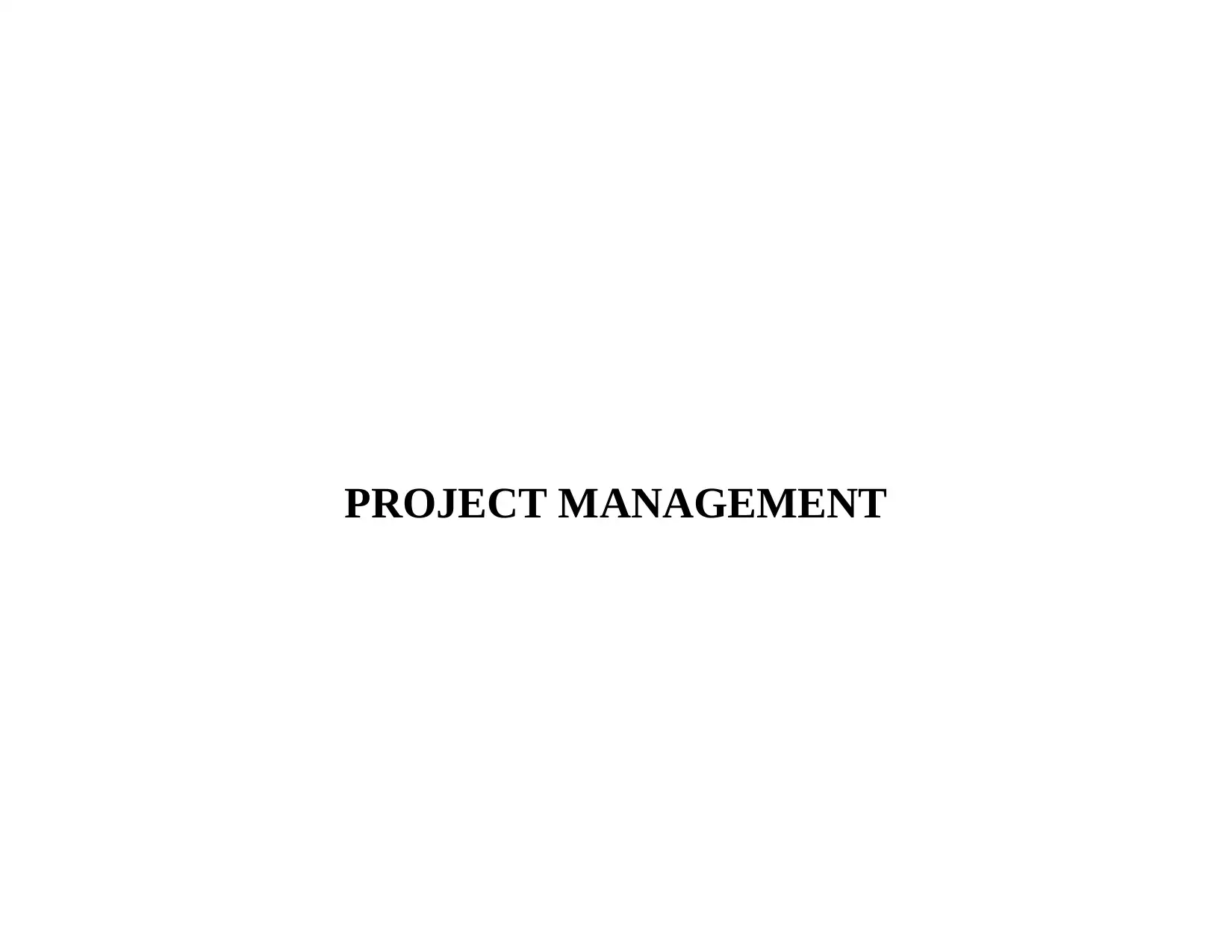
PROJECT MANAGEMENT
Paraphrase This Document
Need a fresh take? Get an instant paraphrase of this document with our AI Paraphraser
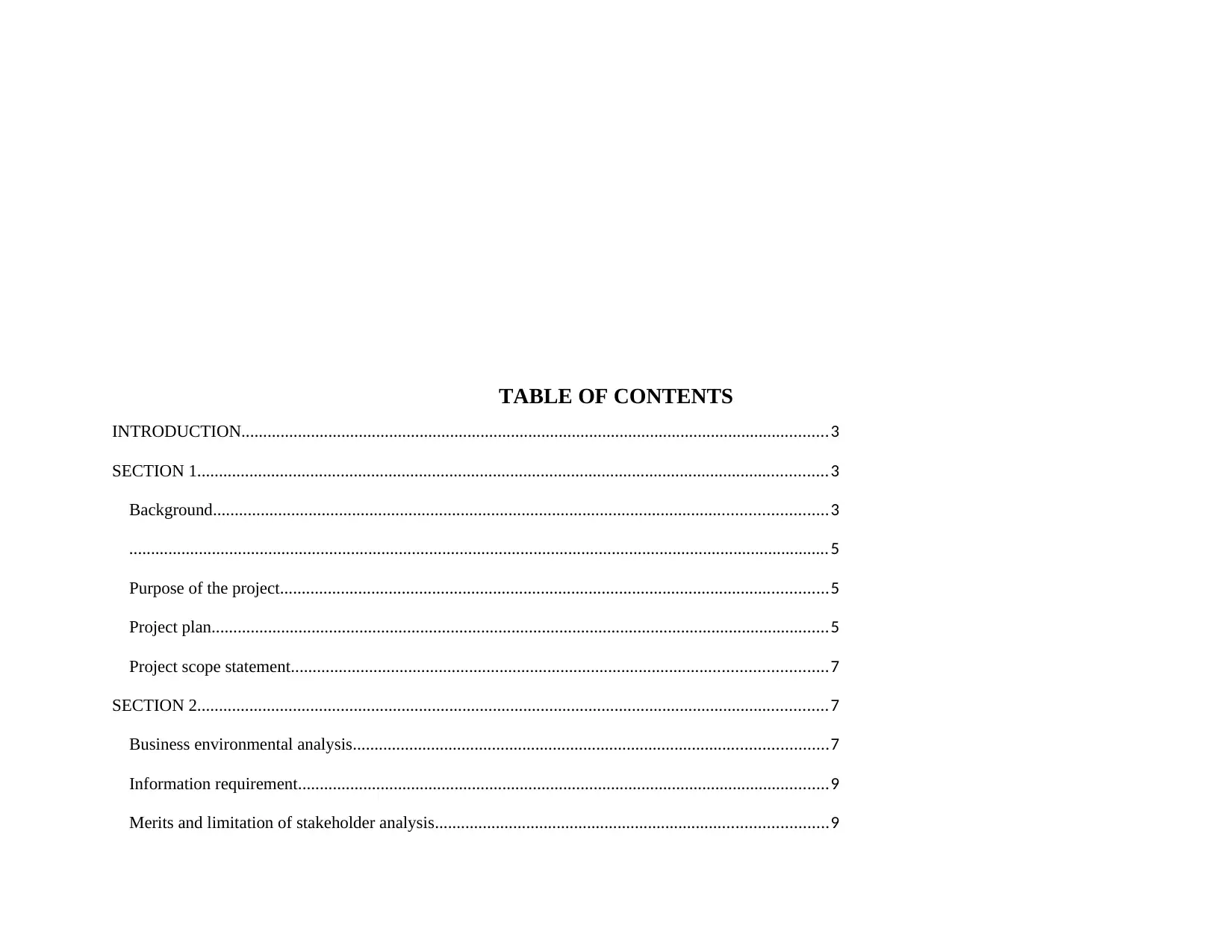
TABLE OF CONTENTS
INTRODUCTION.......................................................................................................................................3
SECTION 1.................................................................................................................................................3
Background.............................................................................................................................................3
.................................................................................................................................................................5
Purpose of the project..............................................................................................................................5
Project plan..............................................................................................................................................5
Project scope statement...........................................................................................................................7
SECTION 2.................................................................................................................................................7
Business environmental analysis.............................................................................................................7
Information requirement..........................................................................................................................9
Merits and limitation of stakeholder analysis..........................................................................................9
INTRODUCTION.......................................................................................................................................3
SECTION 1.................................................................................................................................................3
Background.............................................................................................................................................3
.................................................................................................................................................................5
Purpose of the project..............................................................................................................................5
Project plan..............................................................................................................................................5
Project scope statement...........................................................................................................................7
SECTION 2.................................................................................................................................................7
Business environmental analysis.............................................................................................................7
Information requirement..........................................................................................................................9
Merits and limitation of stakeholder analysis..........................................................................................9

Merit and limitation of constraints analysis...........................................................................................10
SECTION 3...............................................................................................................................................10
Risk management..................................................................................................................................10
Risk analysis using Force Field analysis................................................................................................11
Risk control...........................................................................................................................................12
Resource reviews...................................................................................................................................12
Personnel requirement...........................................................................................................................12
SECTION 4...............................................................................................................................................13
SMART business objectives..................................................................................................................13
Cost benefit analysis..............................................................................................................................13
Financial appraisal of the project...........................................................................................................17
Non-Financial benefits.......................................................................................................................18
CONCLUSION.........................................................................................................................................18
REFERENCES..........................................................................................................................................20
SECTION 3...............................................................................................................................................10
Risk management..................................................................................................................................10
Risk analysis using Force Field analysis................................................................................................11
Risk control...........................................................................................................................................12
Resource reviews...................................................................................................................................12
Personnel requirement...........................................................................................................................12
SECTION 4...............................................................................................................................................13
SMART business objectives..................................................................................................................13
Cost benefit analysis..............................................................................................................................13
Financial appraisal of the project...........................................................................................................17
Non-Financial benefits.......................................................................................................................18
CONCLUSION.........................................................................................................................................18
REFERENCES..........................................................................................................................................20
⊘ This is a preview!⊘
Do you want full access?
Subscribe today to unlock all pages.

Trusted by 1+ million students worldwide
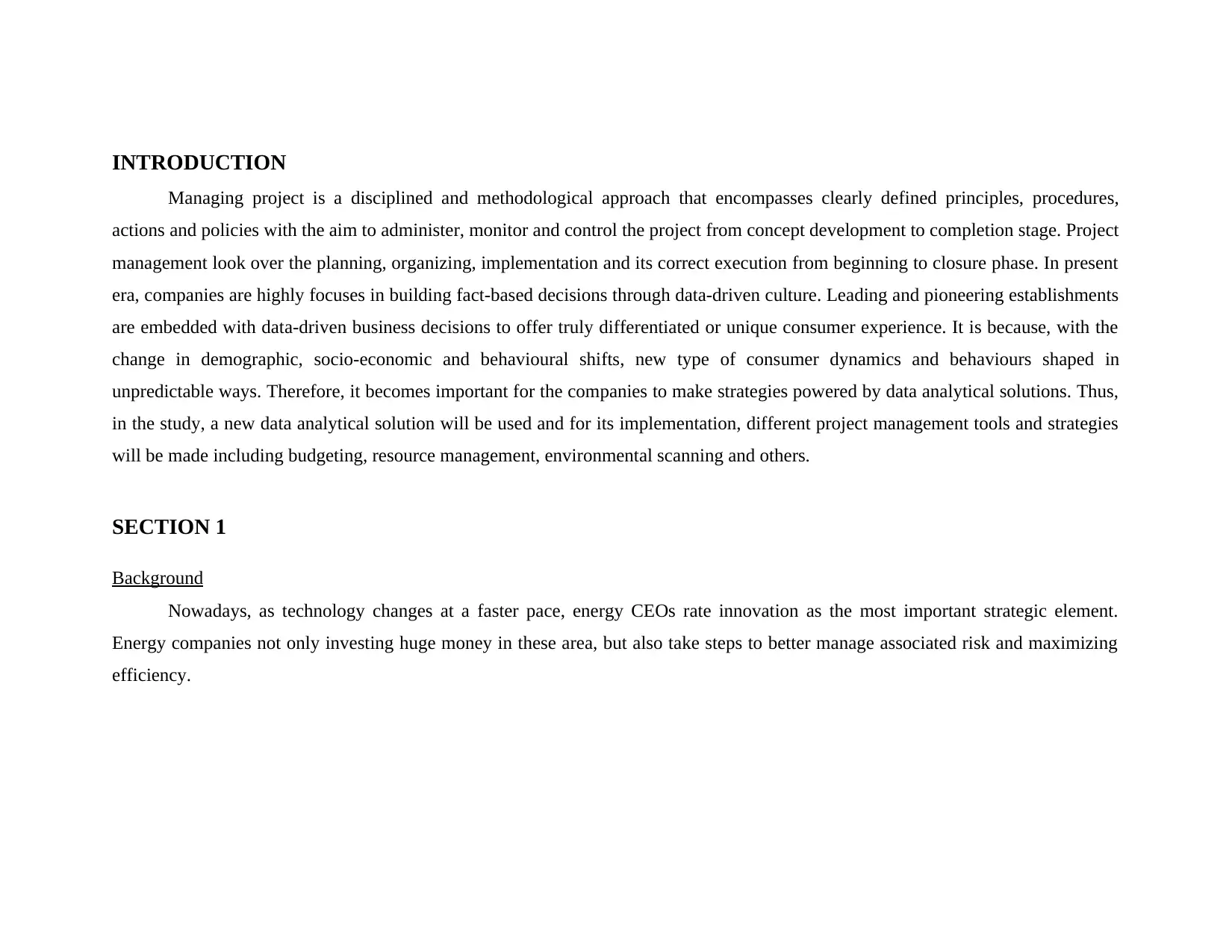
INTRODUCTION
Managing project is a disciplined and methodological approach that encompasses clearly defined principles, procedures,
actions and policies with the aim to administer, monitor and control the project from concept development to completion stage. Project
management look over the planning, organizing, implementation and its correct execution from beginning to closure phase. In present
era, companies are highly focuses in building fact-based decisions through data-driven culture. Leading and pioneering establishments
are embedded with data-driven business decisions to offer truly differentiated or unique consumer experience. It is because, with the
change in demographic, socio-economic and behavioural shifts, new type of consumer dynamics and behaviours shaped in
unpredictable ways. Therefore, it becomes important for the companies to make strategies powered by data analytical solutions. Thus,
in the study, a new data analytical solution will be used and for its implementation, different project management tools and strategies
will be made including budgeting, resource management, environmental scanning and others.
SECTION 1
Background
Nowadays, as technology changes at a faster pace, energy CEOs rate innovation as the most important strategic element.
Energy companies not only investing huge money in these area, but also take steps to better manage associated risk and maximizing
efficiency.
Managing project is a disciplined and methodological approach that encompasses clearly defined principles, procedures,
actions and policies with the aim to administer, monitor and control the project from concept development to completion stage. Project
management look over the planning, organizing, implementation and its correct execution from beginning to closure phase. In present
era, companies are highly focuses in building fact-based decisions through data-driven culture. Leading and pioneering establishments
are embedded with data-driven business decisions to offer truly differentiated or unique consumer experience. It is because, with the
change in demographic, socio-economic and behavioural shifts, new type of consumer dynamics and behaviours shaped in
unpredictable ways. Therefore, it becomes important for the companies to make strategies powered by data analytical solutions. Thus,
in the study, a new data analytical solution will be used and for its implementation, different project management tools and strategies
will be made including budgeting, resource management, environmental scanning and others.
SECTION 1
Background
Nowadays, as technology changes at a faster pace, energy CEOs rate innovation as the most important strategic element.
Energy companies not only investing huge money in these area, but also take steps to better manage associated risk and maximizing
efficiency.
Paraphrase This Document
Need a fresh take? Get an instant paraphrase of this document with our AI Paraphraser
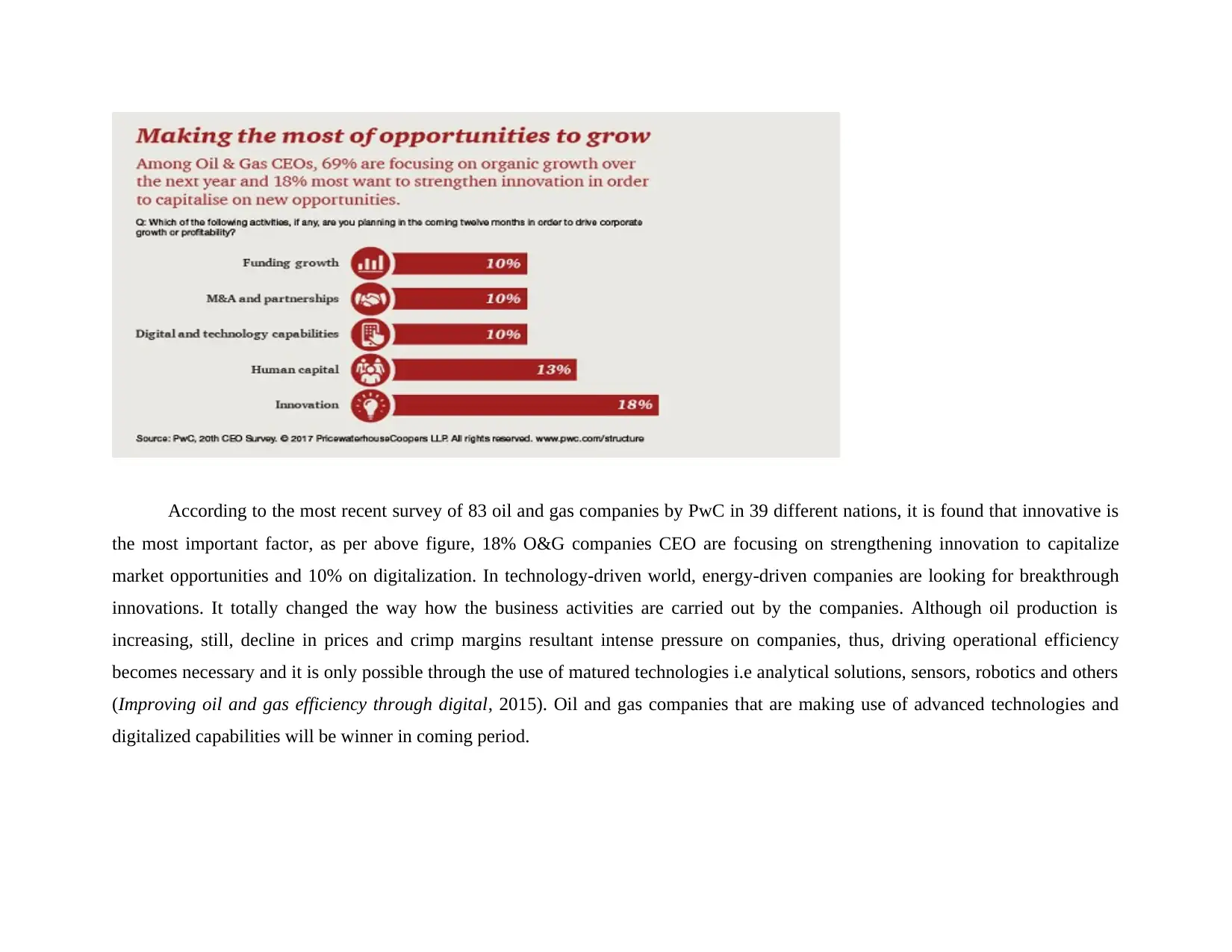
According to the most recent survey of 83 oil and gas companies by PwC in 39 different nations, it is found that innovative is
the most important factor, as per above figure, 18% O&G companies CEO are focusing on strengthening innovation to capitalize
market opportunities and 10% on digitalization. In technology-driven world, energy-driven companies are looking for breakthrough
innovations. It totally changed the way how the business activities are carried out by the companies. Although oil production is
increasing, still, decline in prices and crimp margins resultant intense pressure on companies, thus, driving operational efficiency
becomes necessary and it is only possible through the use of matured technologies i.e analytical solutions, sensors, robotics and others
(Improving oil and gas efficiency through digital, 2015). Oil and gas companies that are making use of advanced technologies and
digitalized capabilities will be winner in coming period.
the most important factor, as per above figure, 18% O&G companies CEO are focusing on strengthening innovation to capitalize
market opportunities and 10% on digitalization. In technology-driven world, energy-driven companies are looking for breakthrough
innovations. It totally changed the way how the business activities are carried out by the companies. Although oil production is
increasing, still, decline in prices and crimp margins resultant intense pressure on companies, thus, driving operational efficiency
becomes necessary and it is only possible through the use of matured technologies i.e analytical solutions, sensors, robotics and others
(Improving oil and gas efficiency through digital, 2015). Oil and gas companies that are making use of advanced technologies and
digitalized capabilities will be winner in coming period.
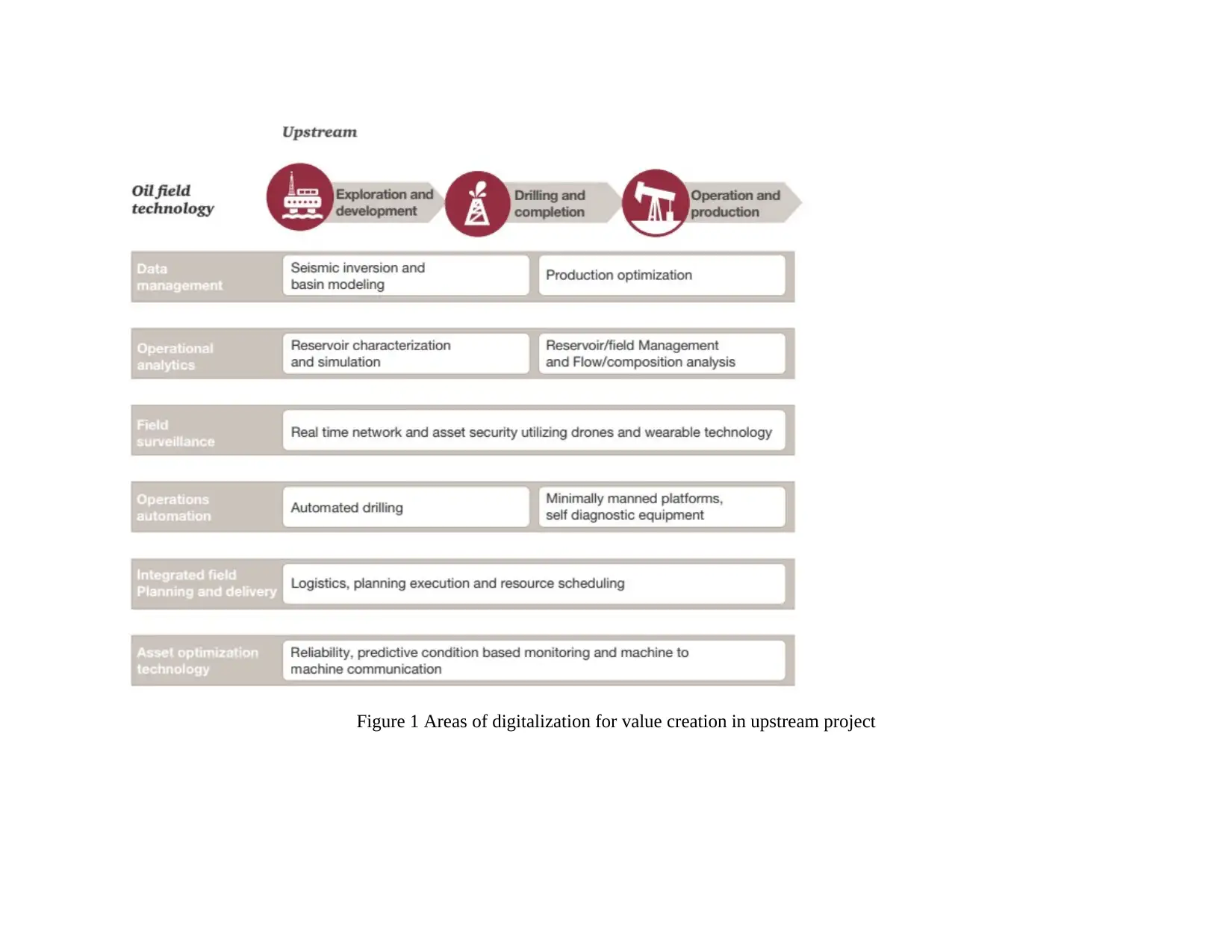
Figure 1 Areas of digitalization for value creation in upstream project
⊘ This is a preview!⊘
Do you want full access?
Subscribe today to unlock all pages.

Trusted by 1+ million students worldwide
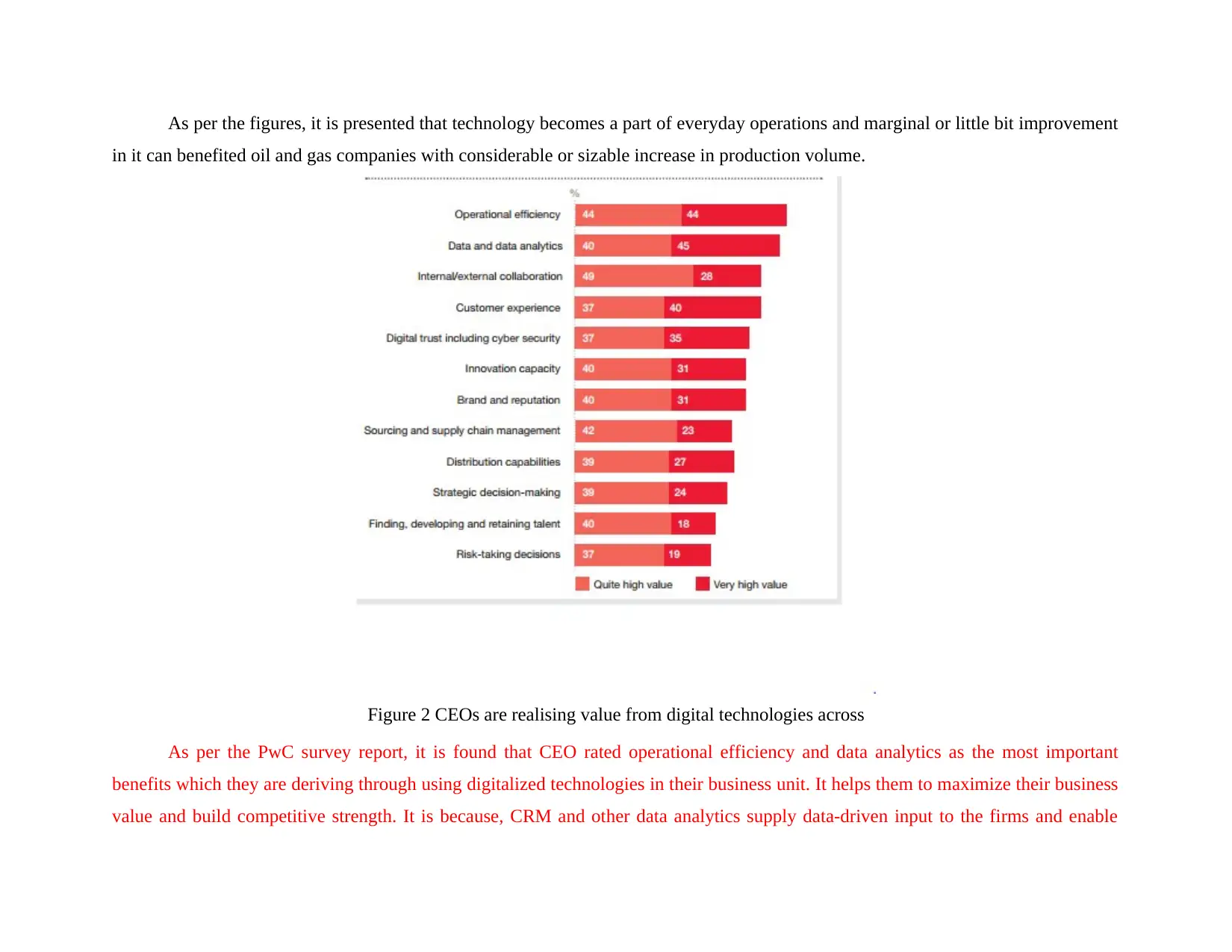
As per the figures, it is presented that technology becomes a part of everyday operations and marginal or little bit improvement
in it can benefited oil and gas companies with considerable or sizable increase in production volume.
Figure 2 CEOs are realising value from digital technologies across
As per the PwC survey report, it is found that CEO rated operational efficiency and data analytics as the most important
benefits which they are deriving through using digitalized technologies in their business unit. It helps them to maximize their business
value and build competitive strength. It is because, CRM and other data analytics supply data-driven input to the firms and enable
in it can benefited oil and gas companies with considerable or sizable increase in production volume.
Figure 2 CEOs are realising value from digital technologies across
As per the PwC survey report, it is found that CEO rated operational efficiency and data analytics as the most important
benefits which they are deriving through using digitalized technologies in their business unit. It helps them to maximize their business
value and build competitive strength. It is because, CRM and other data analytics supply data-driven input to the firms and enable
Paraphrase This Document
Need a fresh take? Get an instant paraphrase of this document with our AI Paraphraser
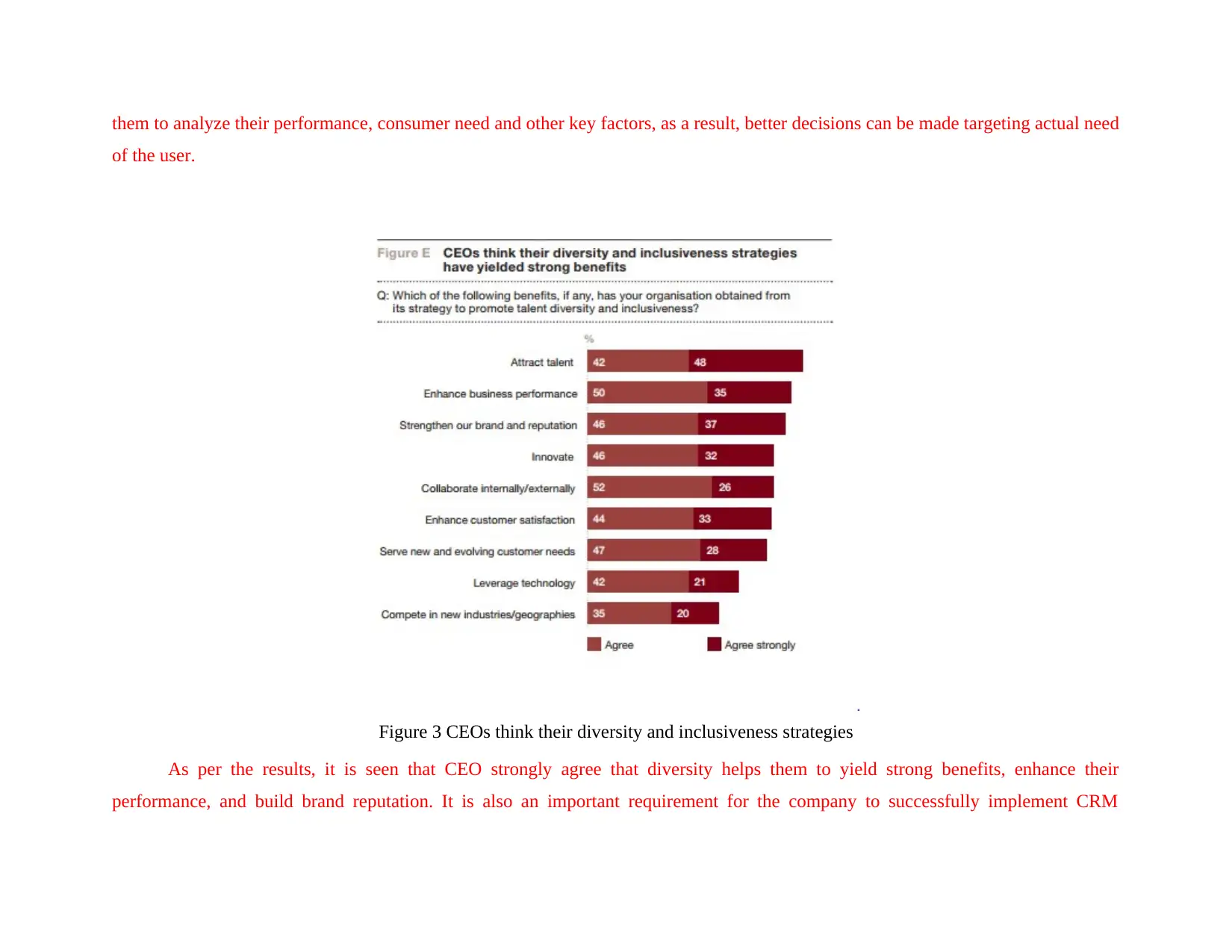
them to analyze their performance, consumer need and other key factors, as a result, better decisions can be made targeting actual need
of the user.
Figure 3 CEOs think their diversity and inclusiveness strategies
As per the results, it is seen that CEO strongly agree that diversity helps them to yield strong benefits, enhance their
performance, and build brand reputation. It is also an important requirement for the company to successfully implement CRM
of the user.
Figure 3 CEOs think their diversity and inclusiveness strategies
As per the results, it is seen that CEO strongly agree that diversity helps them to yield strong benefits, enhance their
performance, and build brand reputation. It is also an important requirement for the company to successfully implement CRM
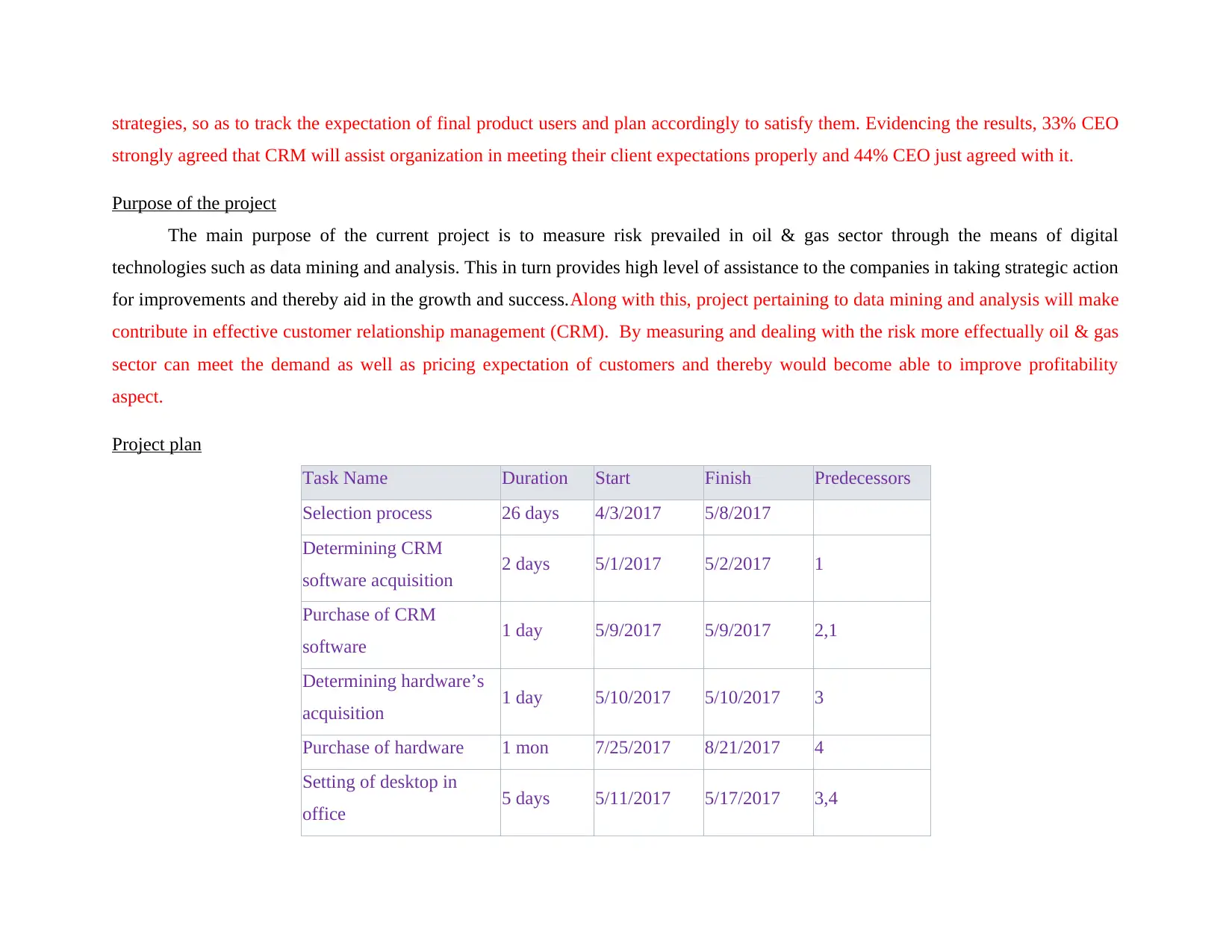
strategies, so as to track the expectation of final product users and plan accordingly to satisfy them. Evidencing the results, 33% CEO
strongly agreed that CRM will assist organization in meeting their client expectations properly and 44% CEO just agreed with it.
Purpose of the project
The main purpose of the current project is to measure risk prevailed in oil & gas sector through the means of digital
technologies such as data mining and analysis. This in turn provides high level of assistance to the companies in taking strategic action
for improvements and thereby aid in the growth and success.Along with this, project pertaining to data mining and analysis will make
contribute in effective customer relationship management (CRM). By measuring and dealing with the risk more effectually oil & gas
sector can meet the demand as well as pricing expectation of customers and thereby would become able to improve profitability
aspect.
Project plan
Task Name Duration Start Finish Predecessors
Selection process 26 days 4/3/2017 5/8/2017
Determining CRM
software acquisition 2 days 5/1/2017 5/2/2017 1
Purchase of CRM
software 1 day 5/9/2017 5/9/2017 2,1
Determining hardware’s
acquisition 1 day 5/10/2017 5/10/2017 3
Purchase of hardware 1 mon 7/25/2017 8/21/2017 4
Setting of desktop in
office 5 days 5/11/2017 5/17/2017 3,4
strongly agreed that CRM will assist organization in meeting their client expectations properly and 44% CEO just agreed with it.
Purpose of the project
The main purpose of the current project is to measure risk prevailed in oil & gas sector through the means of digital
technologies such as data mining and analysis. This in turn provides high level of assistance to the companies in taking strategic action
for improvements and thereby aid in the growth and success.Along with this, project pertaining to data mining and analysis will make
contribute in effective customer relationship management (CRM). By measuring and dealing with the risk more effectually oil & gas
sector can meet the demand as well as pricing expectation of customers and thereby would become able to improve profitability
aspect.
Project plan
Task Name Duration Start Finish Predecessors
Selection process 26 days 4/3/2017 5/8/2017
Determining CRM
software acquisition 2 days 5/1/2017 5/2/2017 1
Purchase of CRM
software 1 day 5/9/2017 5/9/2017 2,1
Determining hardware’s
acquisition 1 day 5/10/2017 5/10/2017 3
Purchase of hardware 1 mon 7/25/2017 8/21/2017 4
Setting of desktop in
office 5 days 5/11/2017 5/17/2017 3,4
⊘ This is a preview!⊘
Do you want full access?
Subscribe today to unlock all pages.

Trusted by 1+ million students worldwide
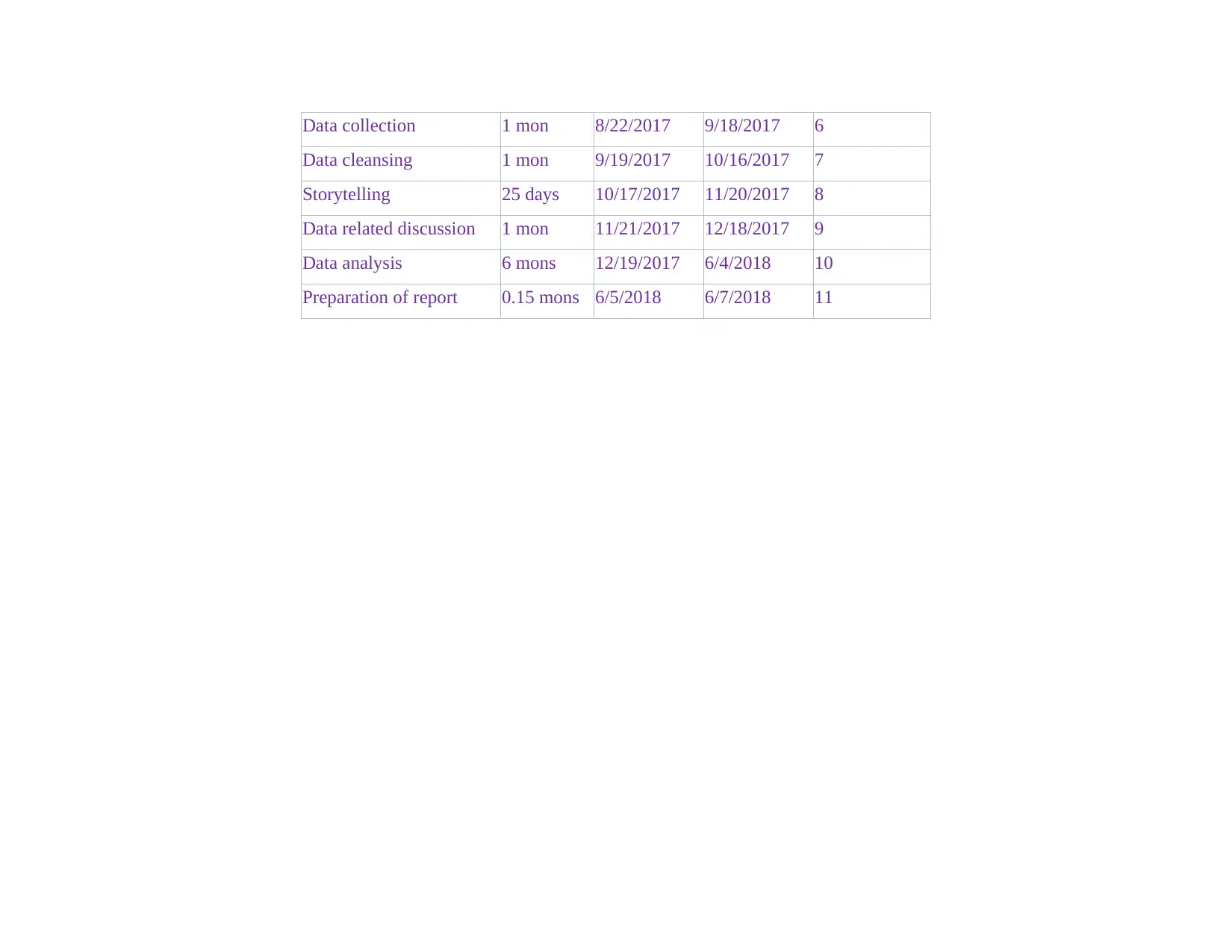
Data collection 1 mon 8/22/2017 9/18/2017 6
Data cleansing 1 mon 9/19/2017 10/16/2017 7
Storytelling 25 days 10/17/2017 11/20/2017 8
Data related discussion 1 mon 11/21/2017 12/18/2017 9
Data analysis 6 mons 12/19/2017 6/4/2018 10
Preparation of report 0.15 mons 6/5/2018 6/7/2018 11
Data cleansing 1 mon 9/19/2017 10/16/2017 7
Storytelling 25 days 10/17/2017 11/20/2017 8
Data related discussion 1 mon 11/21/2017 12/18/2017 9
Data analysis 6 mons 12/19/2017 6/4/2018 10
Preparation of report 0.15 mons 6/5/2018 6/7/2018 11
Paraphrase This Document
Need a fresh take? Get an instant paraphrase of this document with our AI Paraphraser
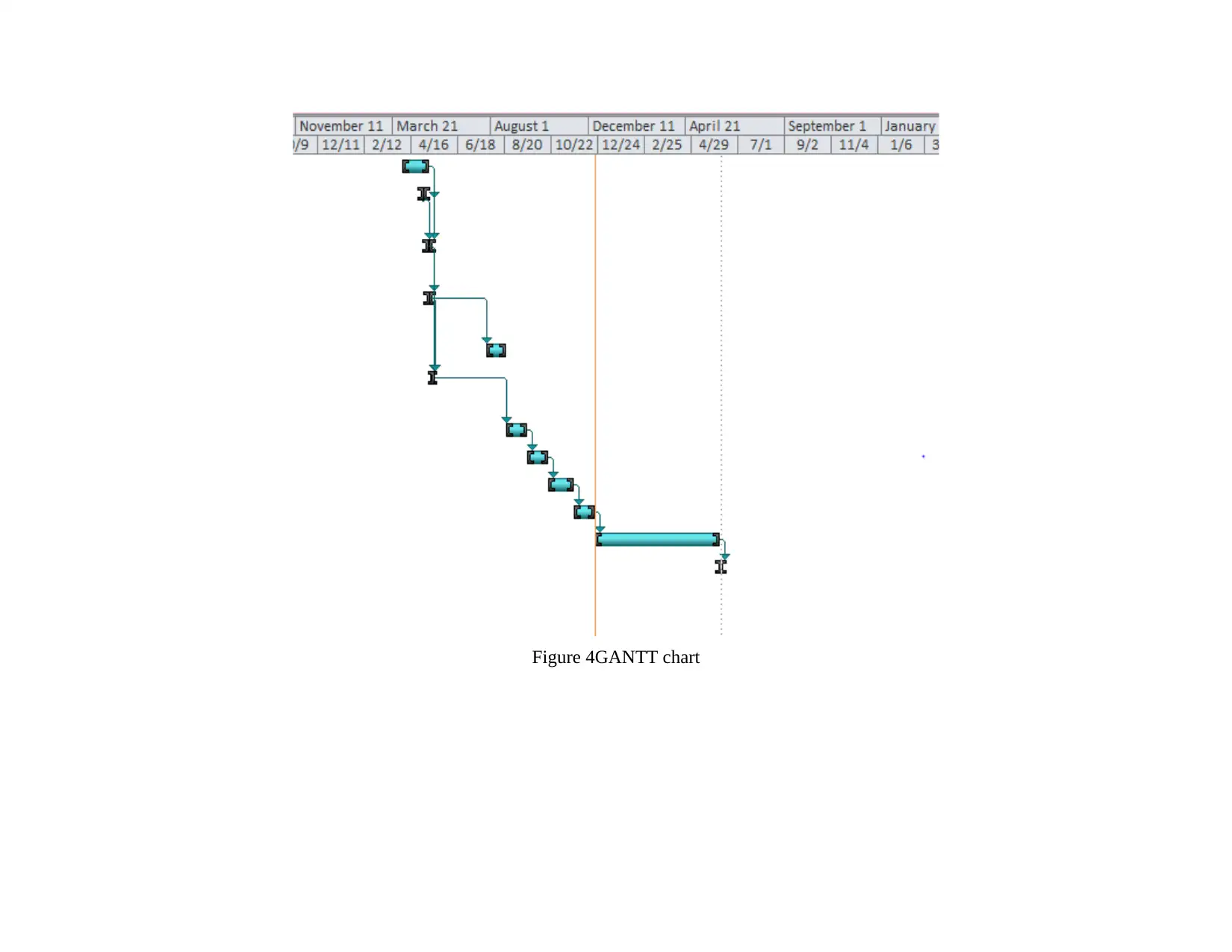
Figure 4GANTT chart
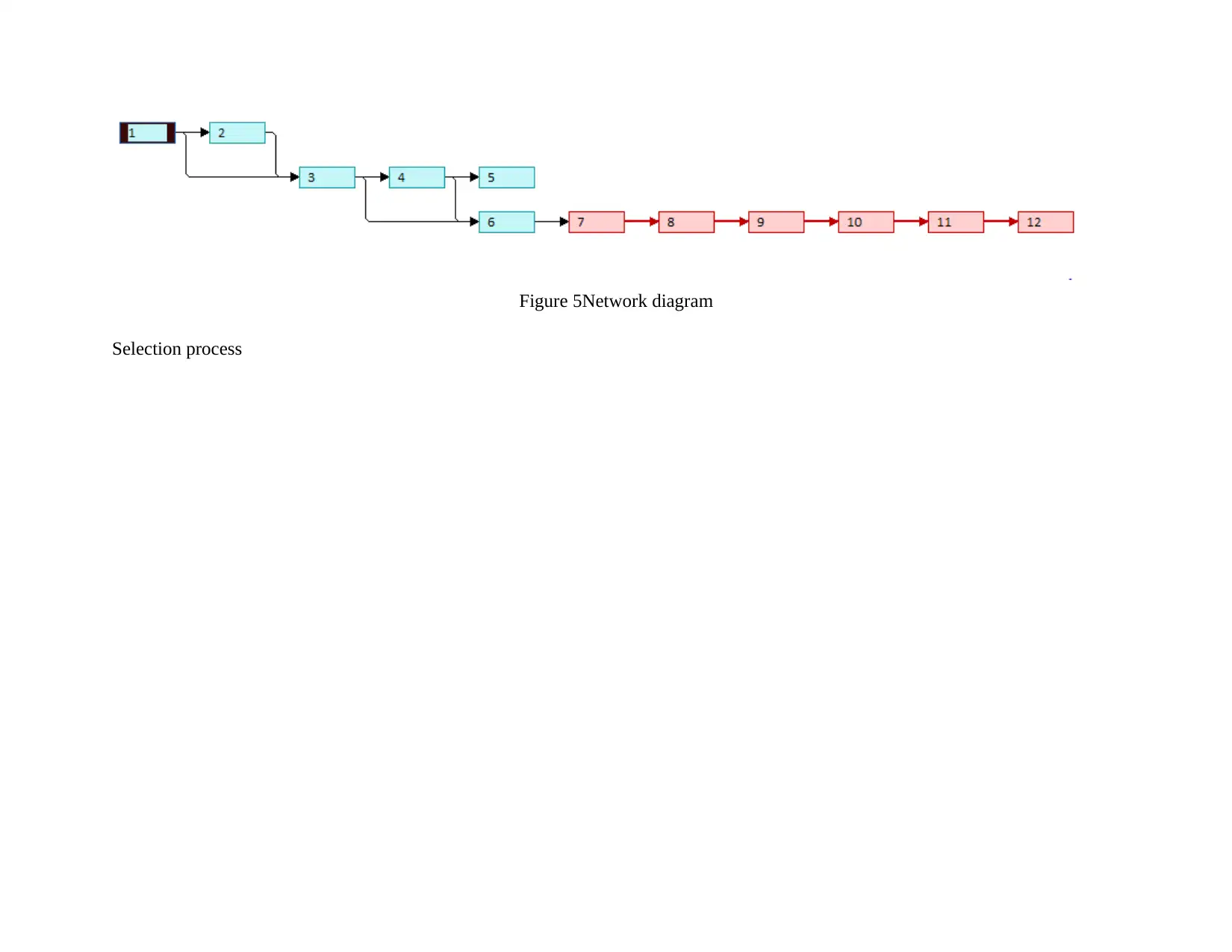
Figure 5Network diagram
Selection process
Selection process
⊘ This is a preview!⊘
Do you want full access?
Subscribe today to unlock all pages.

Trusted by 1+ million students worldwide
1 out of 34
Related Documents
Your All-in-One AI-Powered Toolkit for Academic Success.
+13062052269
info@desklib.com
Available 24*7 on WhatsApp / Email
![[object Object]](/_next/static/media/star-bottom.7253800d.svg)
Unlock your academic potential
Copyright © 2020–2025 A2Z Services. All Rights Reserved. Developed and managed by ZUCOL.





